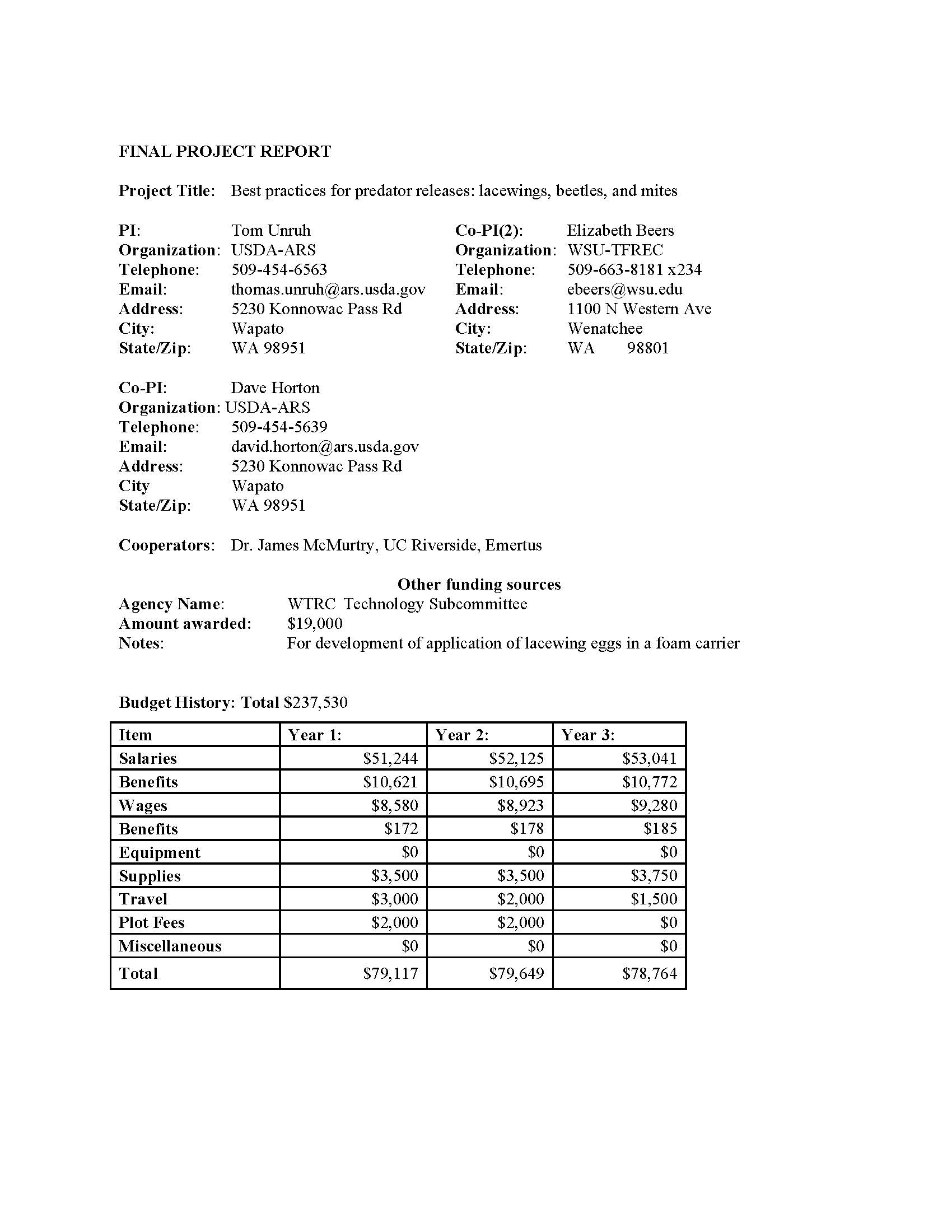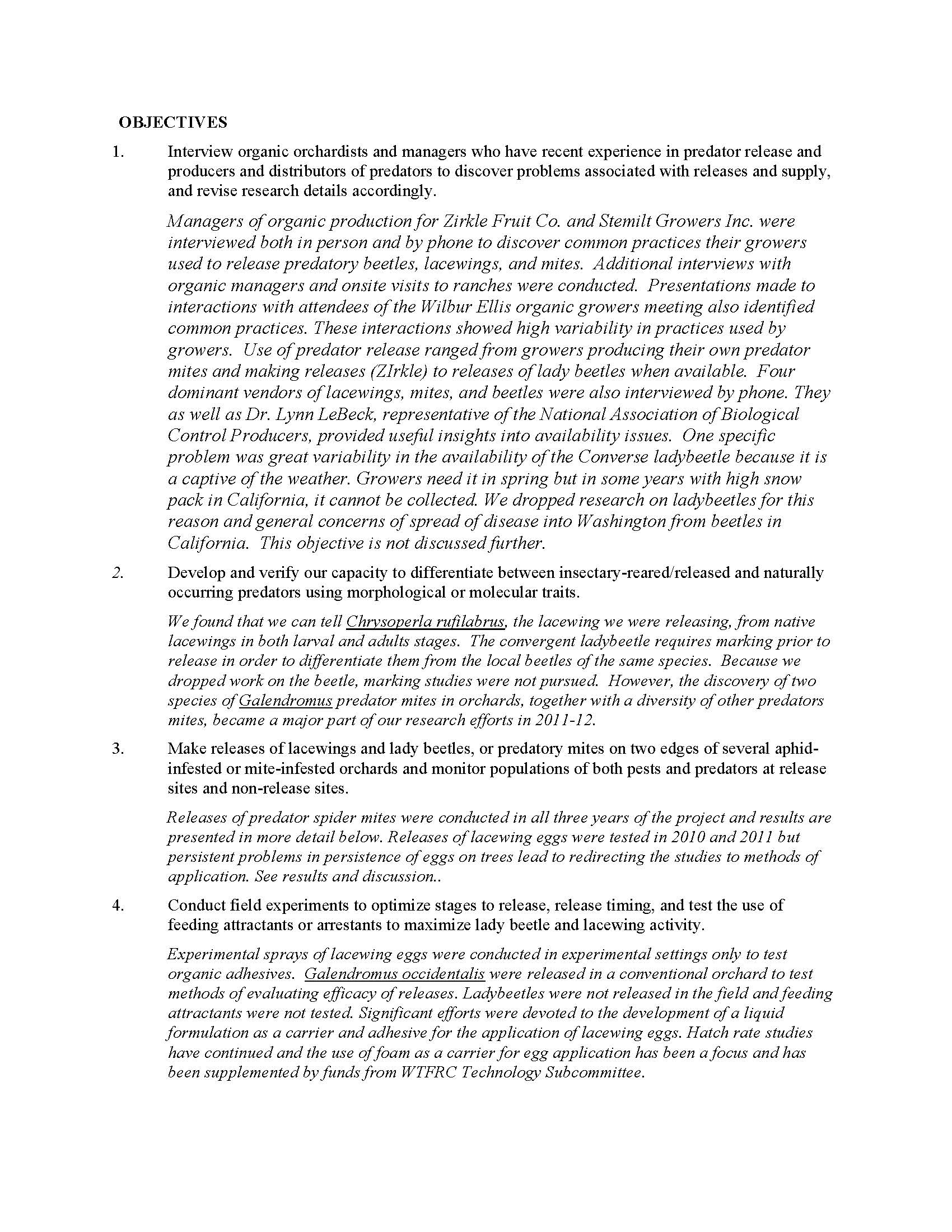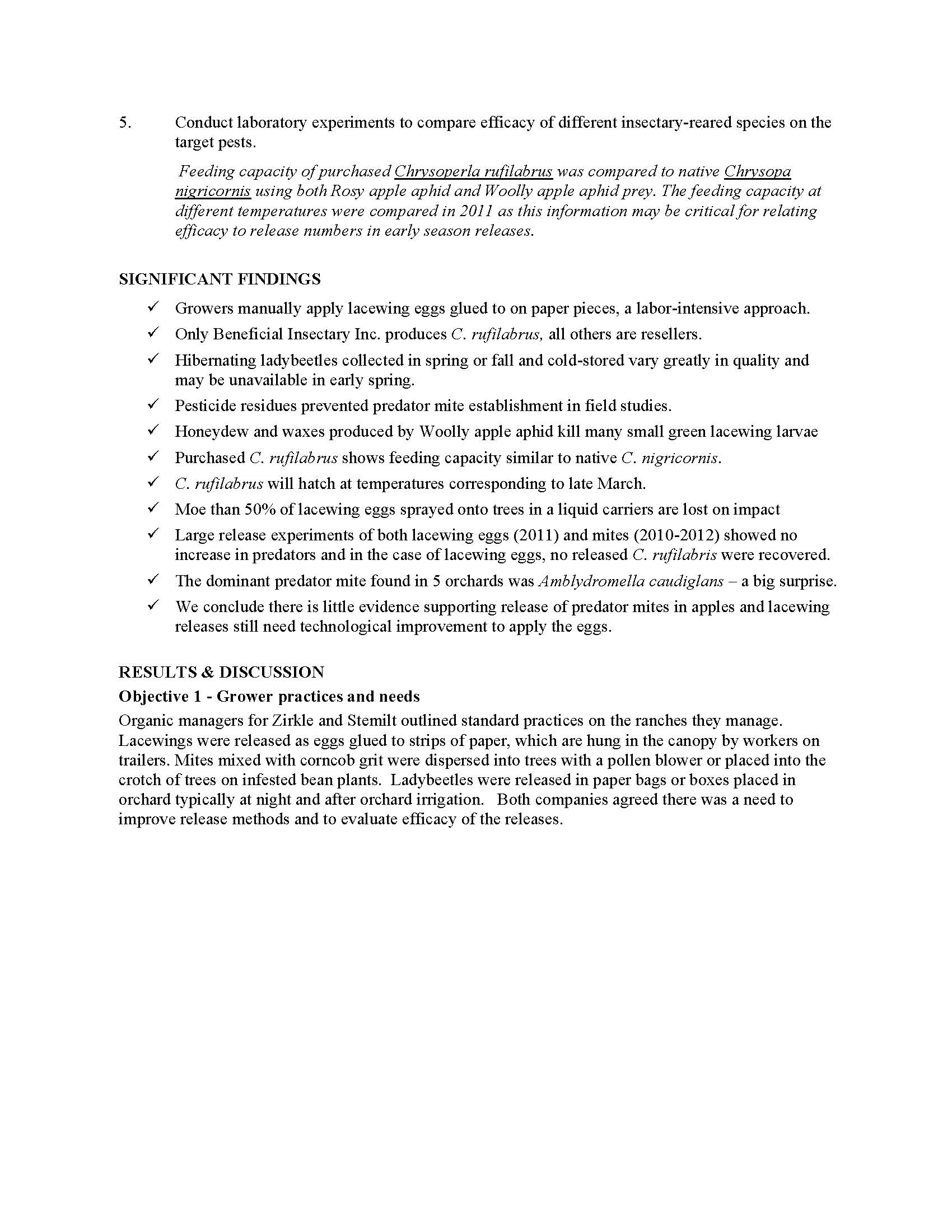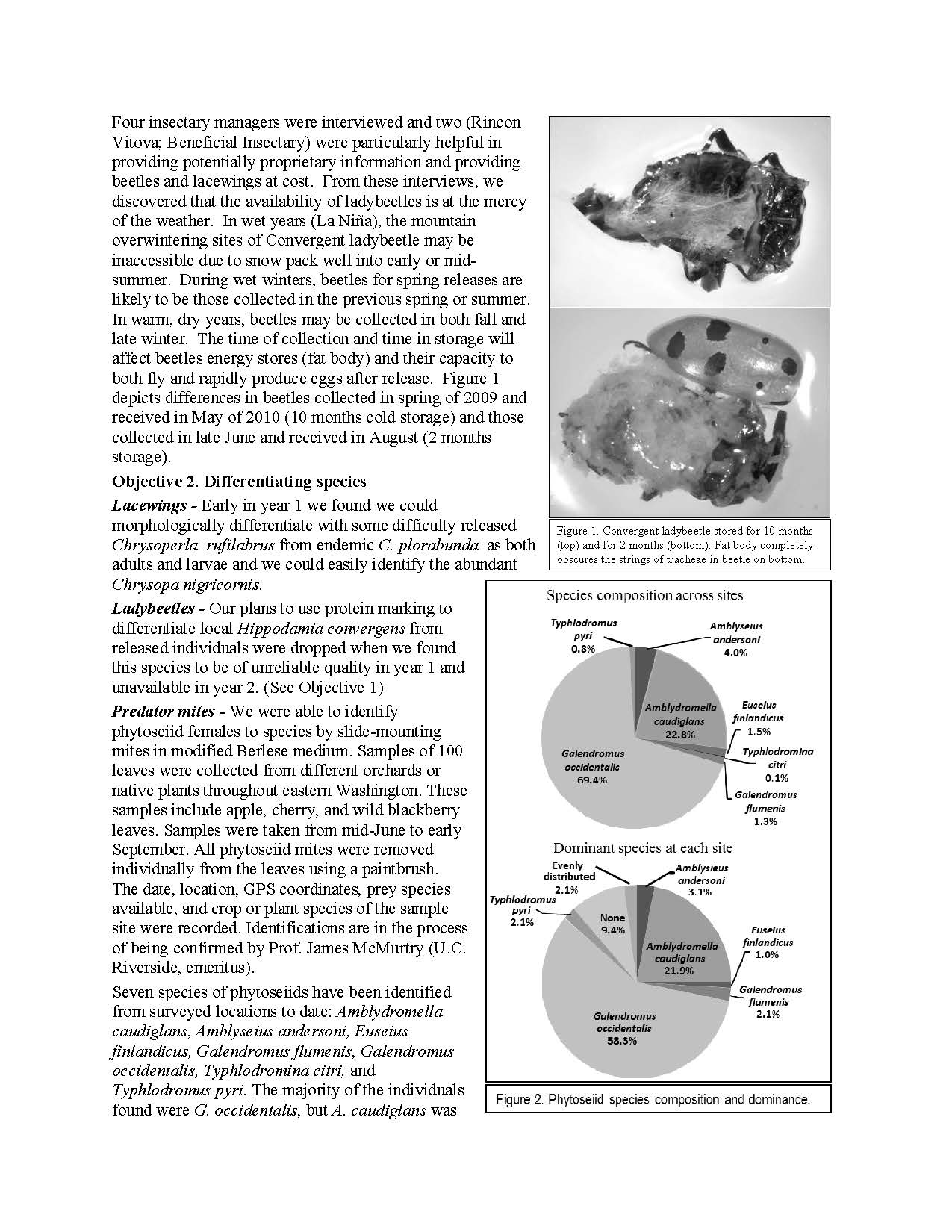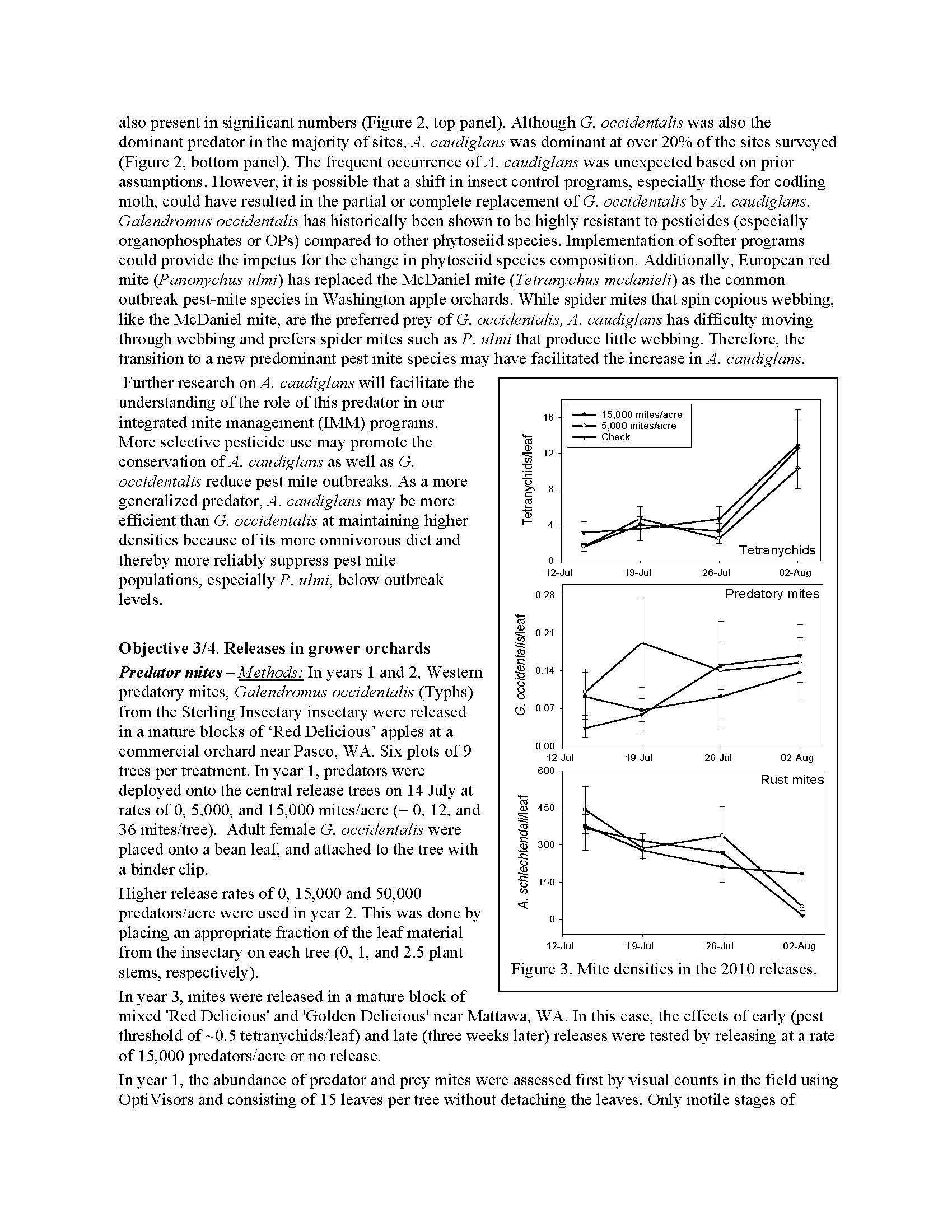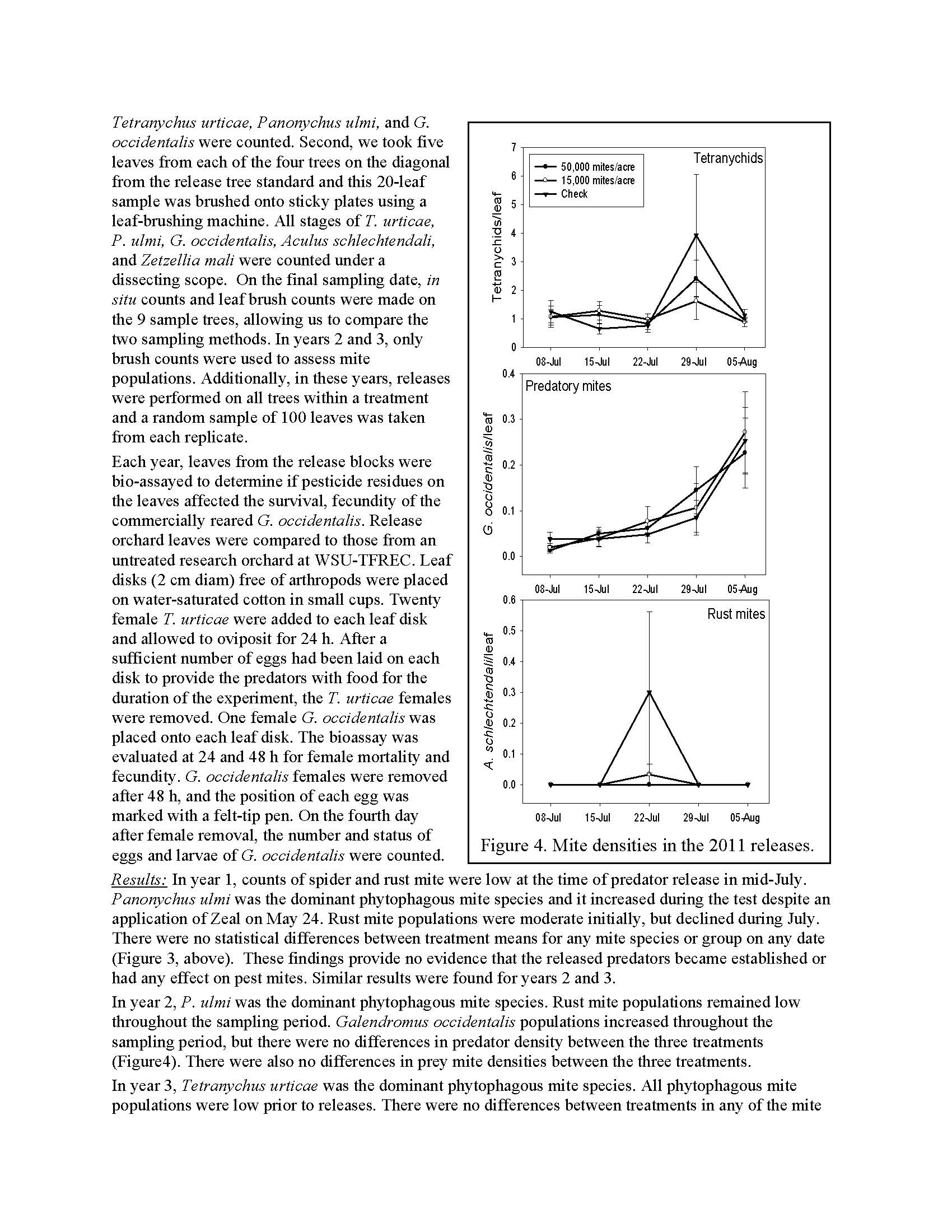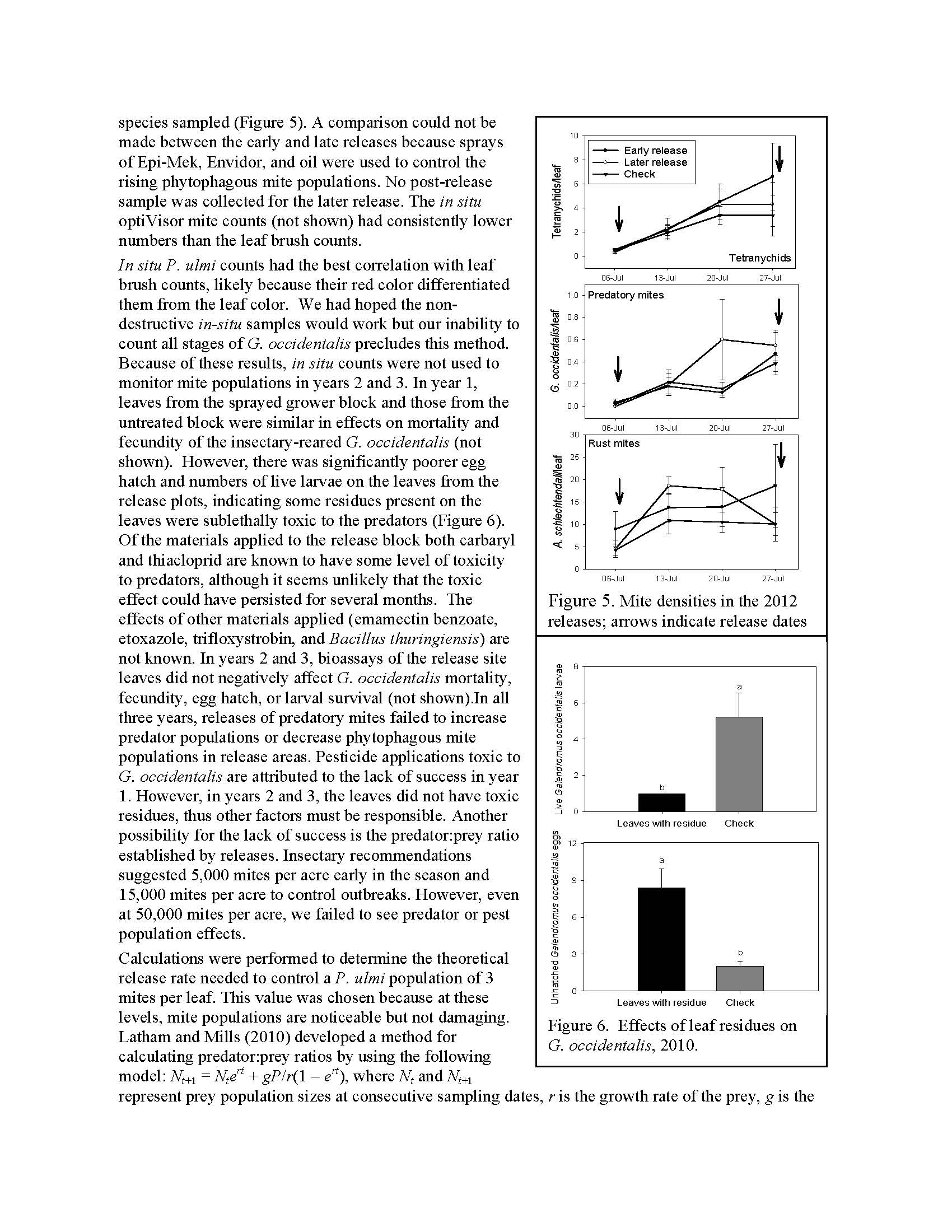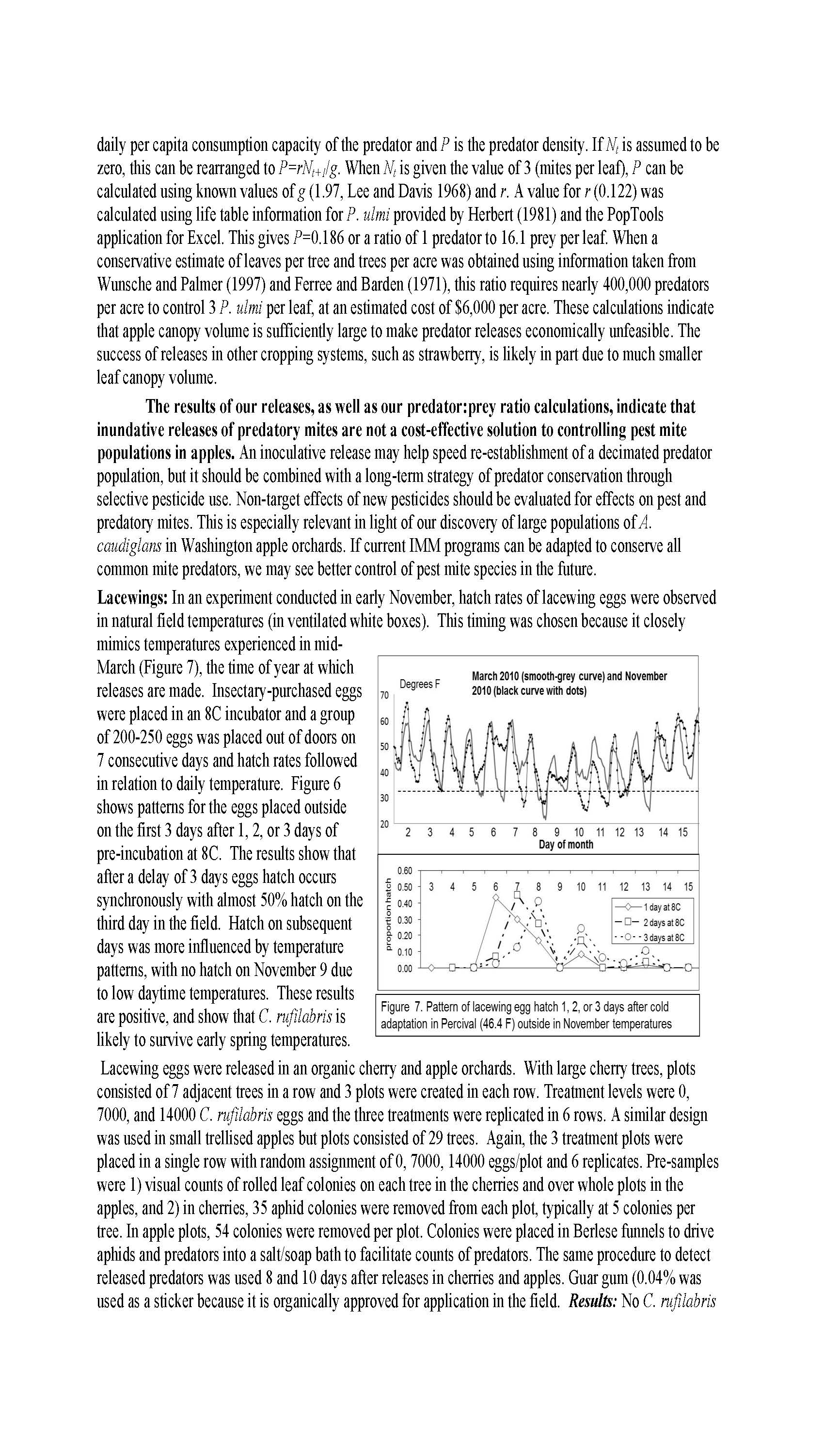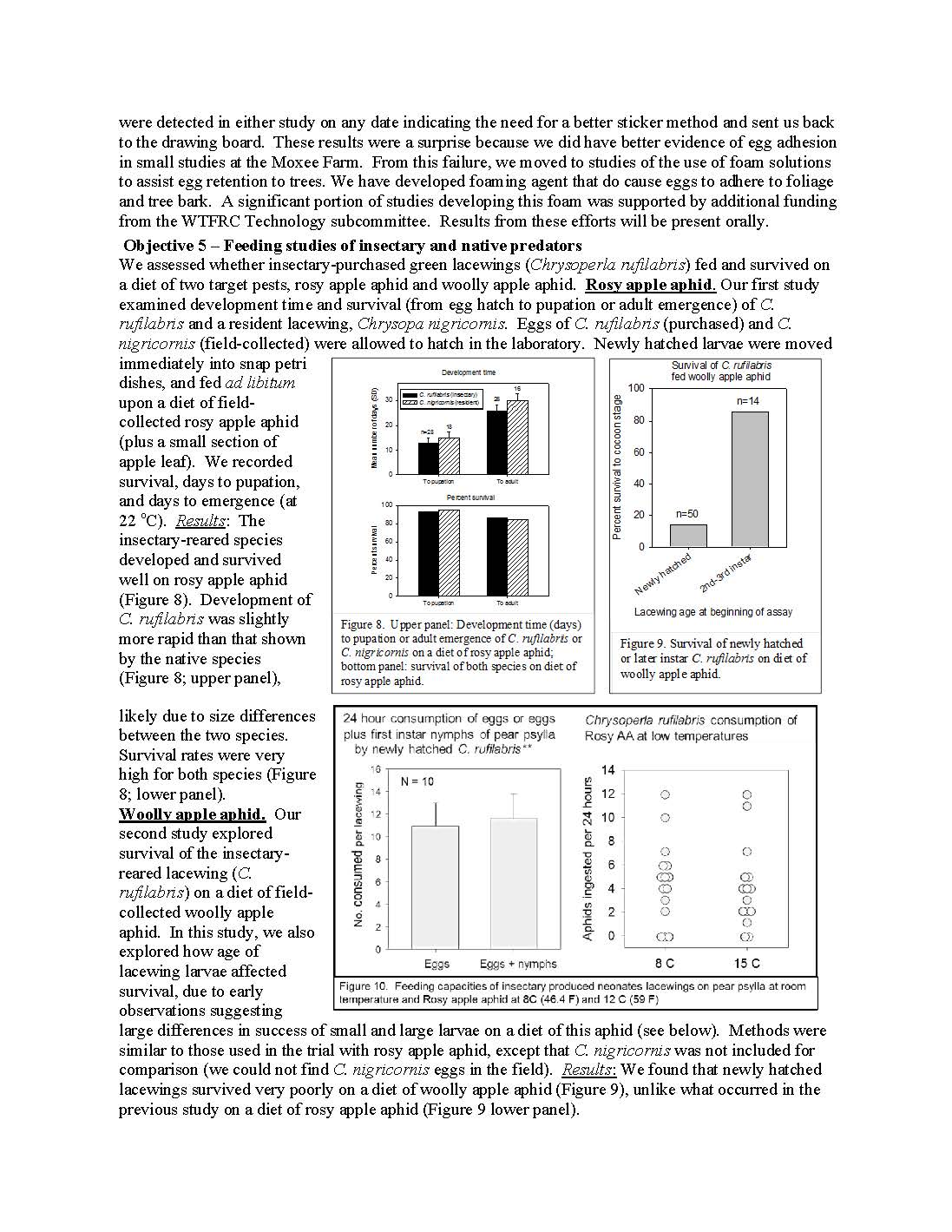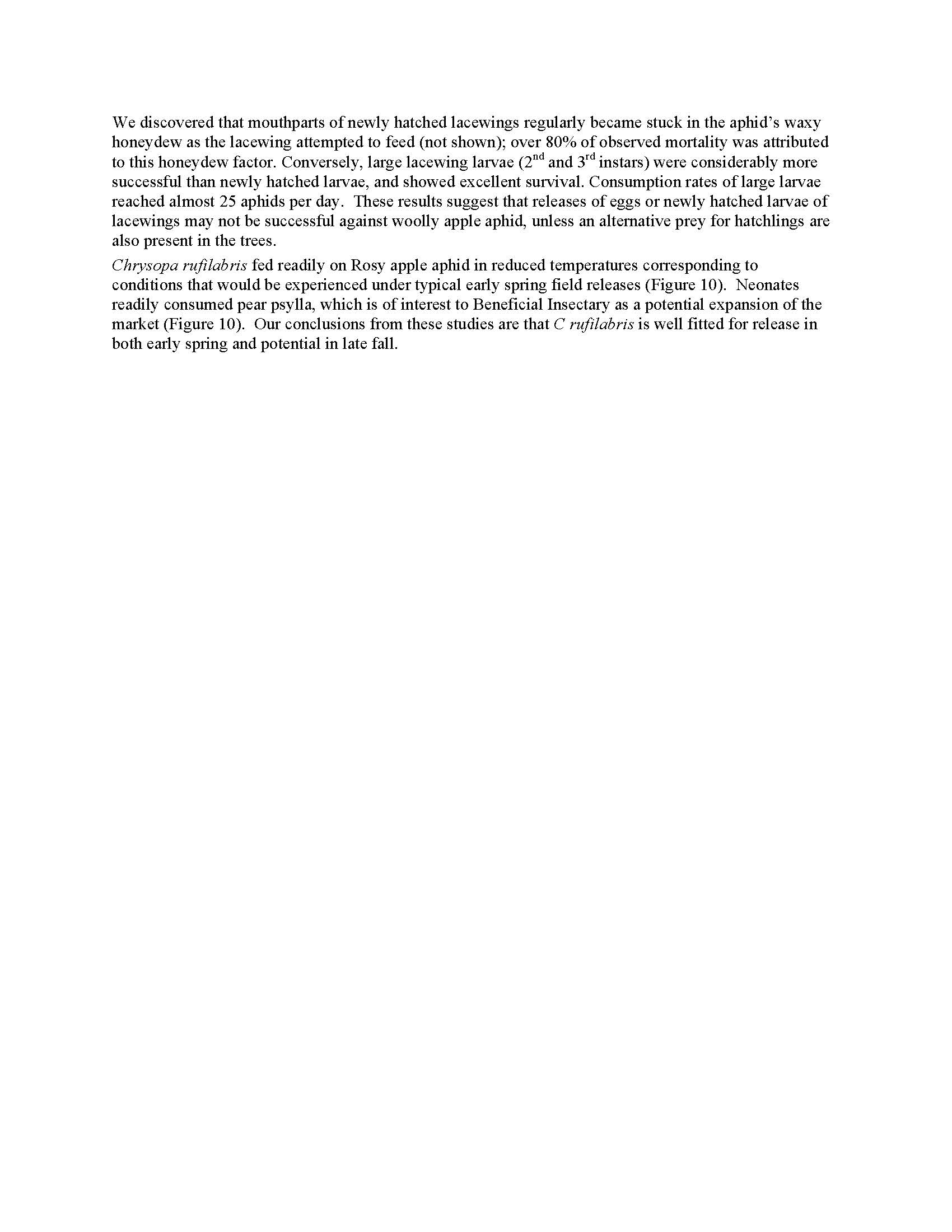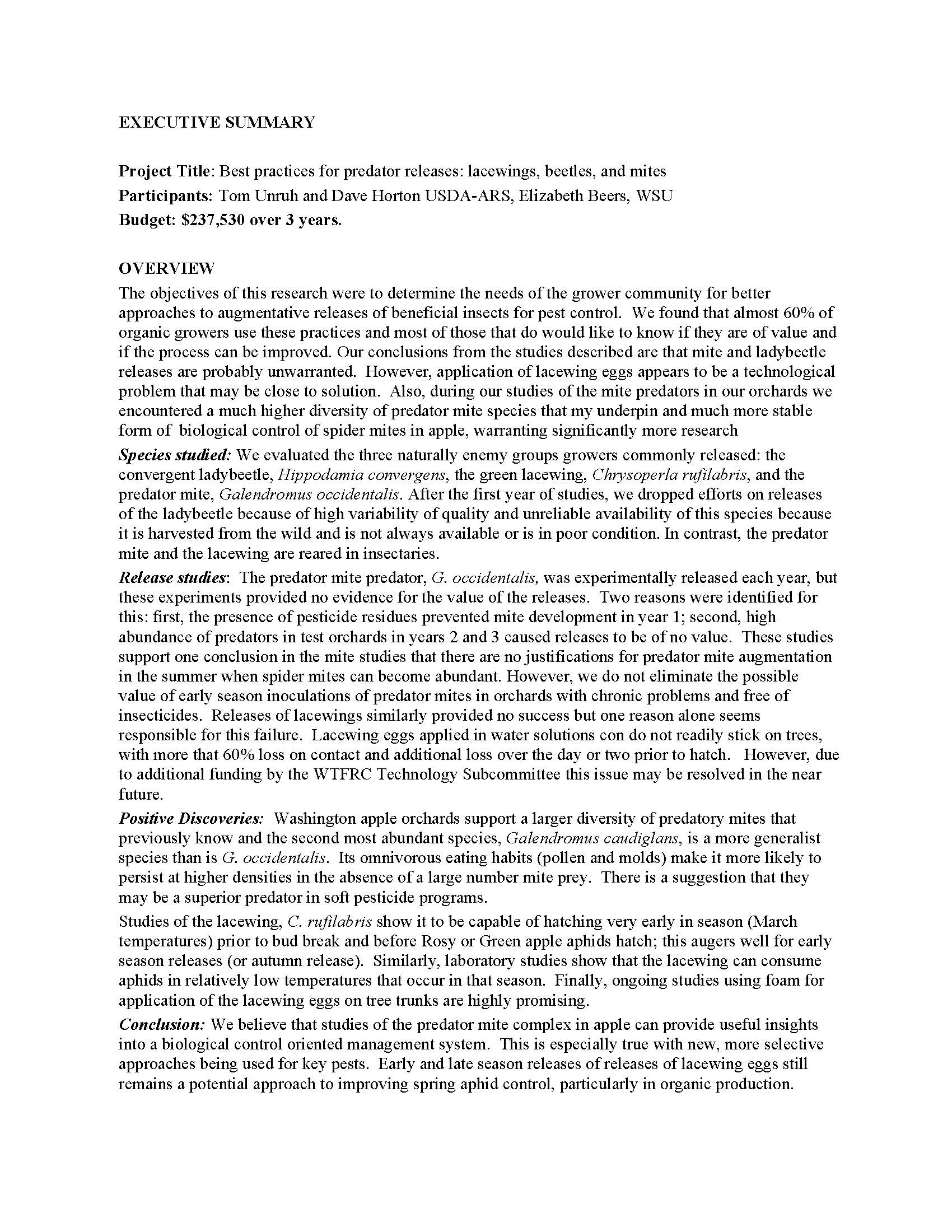Best practices for predator releases: lacewings, beetles, and mites
Author: Tom Unruh, Elizabeth Beers, Dave Horton
Published: 2012
Summary: The objectives of this project were: 1. Interview organic orchardists and managers who have recent experience in predator release and producers and distributors of predators to discover problems associated with releases and supply, and revise research details accordingly. 2. Develop and verify our capacity to differentiate between insectary-reared/released and naturally occurring predators using morphological or molecular traits. 3. Make releases of lacewings and lady beetles, or predatory mites on two edges of several aphid- infested or mite-infested orchards and monitor populations of both pests and predators at release sites and non-release sites. 4. Conduct field experiments to optimize stages to release, release timing, and test the use of feeding attractants or arrestants to maximize lady beetle and lacewing activity. 5. Conduct laboratory experiments to compare efficacy of different insectary-reared species on the target pests.
Keywords:

